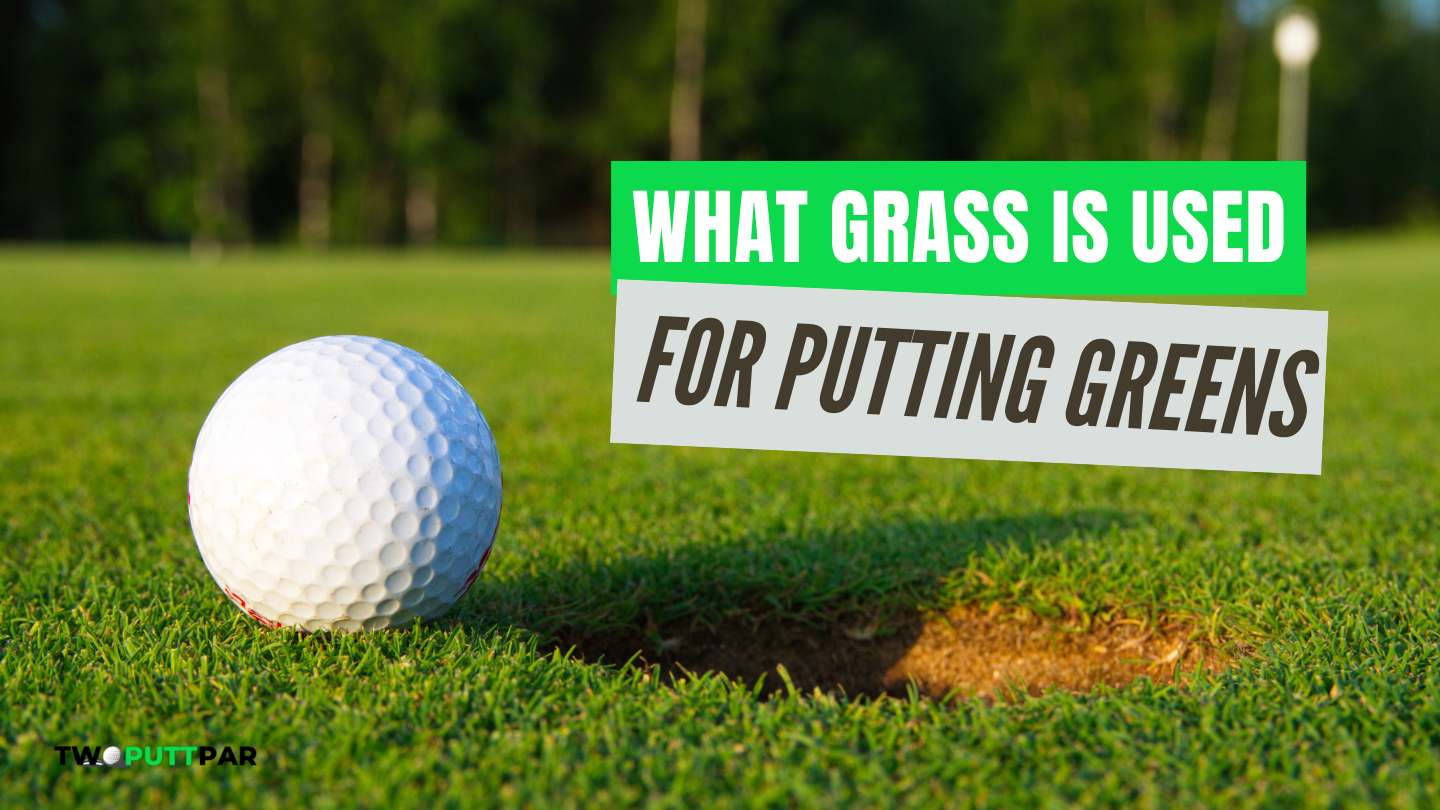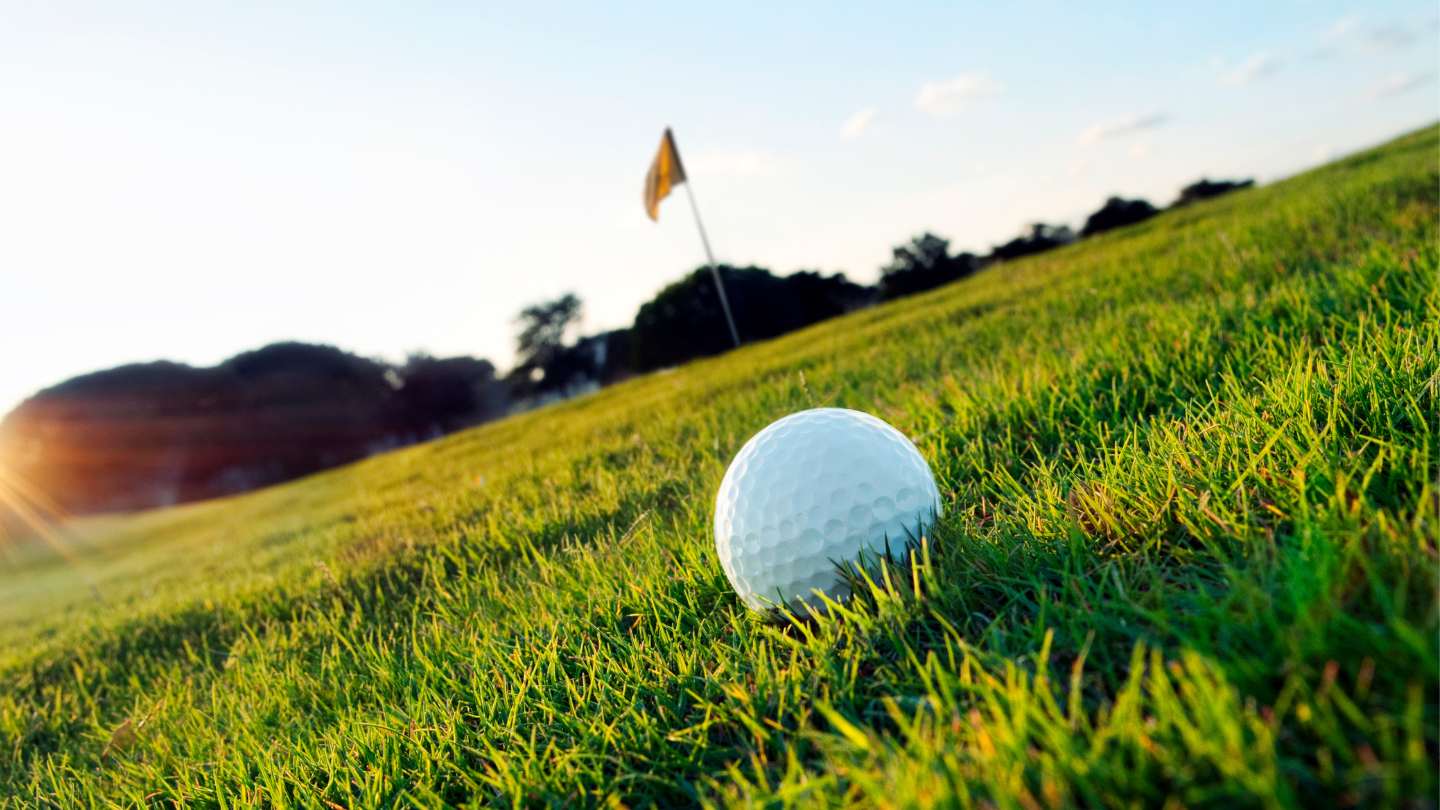
Mid-Handicap golfer who loves to share his rounds and experiences playing courses all around the UK in a hope that it will help others find those hidden gem golf courses.
I seek out golf courses that don’t get the credit they deserve and are often overlooked for the bigger more well known ones.
One of the key factors in achieving precision and skill in golf is having the right type of grass on your putting green.
In this post, we will delve into the different types of grass used for putting greens.
Putting greens predominantly utilize Bermudagrass, creeping bentgrass, and Poa annua, with the selection often depending on the regional climate and specific golf course requirements.
What Grass Is Used For Putting Greens
Putting greens are typically covered in grass varieties such as Bentgrass, Bermuda Grass, Fescue Grass, Poa Annua, Rye Grass, and Zoysia, selected based on the regional climate and specific requirements of the golf course.
Bentgrass
Bentgrass is a cool-season grass that’s popular due to its fine texture and the smooth, consistent surface it provides.
This grass can tolerate low mowing heights, making it ideal for putting greens where a smooth, short surface is desired.
It’s also resistant to diseases and pests, which makes maintenance easier. However, it does require a significant amount of water and nutrients, so it’s not the most environmentally friendly option.

Bermuda Grass
Bermuda Grass is a warm-season grass that thrives in tropical and subtropical climates. It’s highly resilient and can withstand heavy foot traffic, making it a great choice for golf courses.
This grass type can also recover quickly from divots, which are small holes made when a golf ball hits the ground. Bermuda grass is also drought-resistant, making it a good choice for areas with less rainfall.
Fescue Grass
Fescue Grass is a cool-season grass that’s known for its ability to withstand challenging conditions.
It’s often used in coastal regions with sandy soils because it’s drought-tolerant and requires less fertilizer than other grasses.
This makes it a more sustainable choice for golf courses. However, Fescue Grass can struggle in extreme heat, so it’s not the best choice for golf courses in tropical regions.
Poa Annua
Poa Annua, or Annual Bluegrass, is a cool-season grass that’s common on putting greens due to its fine leaf texture and bright green colour.
This grass provides a smooth surface for golf balls to roll on. However, it requires regular maintenance to keep it in top condition and prevent diseases and pests.
It’s also less durable than some other grass types, so it may not be the best choice for high-traffic areas.
Rye Grass
Rye Grass is a cool-season grass that’s known for its beautiful, lush green colour. It’s often used in combination with other grass types to improve the overall look of the golf course.
Rye Grass can handle a range of soil types and conditions, making it a versatile choice. However, it does require regular watering and fertilizing to keep it looking its best.
Zoysia
Zoysia is a warm-season grass that’s known for its lush, carpet-like appearance. It’s slow-growing but very dense, which makes it a durable option that’s resistant to wear and tear.
Zoysia can also tolerate a range of soil conditions, making it a versatile choice for golf courses. However, it does require a lot of sunlight, so it may not be the best choice for shaded areas.
Factors Influencing Grass Selection For Golf Courses
The selection of grass for golf courses is influenced by several factors including:
Climate and Weather Conditions
Climate and weather conditions are significant factors in grass selection. Certain grass types thrive better in specific climates – for instance, Bermuda Grass is more suitable for warmer, tropical climates while Bentgrass is ideal for cooler regions.
The amount of sunlight, temperature variations, and precipitation levels in the region all play a role in determining the most suitable grass type for a golf course.
Warm-Season vs. Cool-Season Grasses
The choice between warm-season and cool-season grasses is also important. Warm-season grasses like Bermuda Grass and Zoysia grow well in hot summer months, whereas cool-season grasses such as Bentgrass and Ryegrass flourish in cooler temperatures.
The geographical location and its associated climate will influence this decision.
Soil Type and Quality
Soil type and quality significantly impact grass selection. Some grass types require sandy soils, while others can tolerate clay or loamy soils.
The soil’s pH level, nutrient content, and drainage capabilities should be considered when selecting the appropriate grass type for a golf course.
Water Availability and Quality
Water availability and quality are crucial considerations. Certain grass types are more drought-resistant than others and may be more suitable for areas with less rainfall.
Similarly, the quality of available irrigation water, including its salinity and mineral content, can affect the health and growth of different grass types.
Maintenance Requirements and Budget
Maintenance requirements and budget also play a role in grass selection. Some grass types require more frequent mowing, fertilising, and pest control measures than others.
Therefore, the available resources, time, and budget for maintenance activities should be considered when choosing the grass type.
Traffic and Usage Patterns
Lastly, traffic and usage patterns on the golf course influence grass selection. High-traffic areas require grass types that can withstand wear and tear and recover quickly from damage.
Therefore, understanding how the golf course will be used is essential in selecting the most suitable grass type.
How Is The Grass on A Golf Course Maintained?
The maintenance of grass on a golf course involves several steps including regular mowing, spreading sand or “top dressing”, chemically treating the turf, repairing ball marks, and using special techniques such as aeration and vertical mowing.
Find out – How Long For Aerated Greens To Recover?
Regular Mowing
Regular mowing is crucial to maintaining a golf course. The frequency of mowing depends on the desired height of the grass. Shorter grass requires more frequent mowing.
Special mowers, known as reel mowers, are often used on putting greens to achieve the short and even grass lengths required.
Top Dressing
Top dressing is a practice that involves spreading sand over the green.
This process helps to stand the blades of grass upright, allowing for a more precise cut. It also aids in the control of thatch, improves the smoothness and speed of the putting surface, and can help to dilute soil layering.
Chemical Treatment
Chemical treatment of the turf is another important aspect of golf course maintenance.
This could involve the use of fertilisers to provide necessary nutrients to the grass, or the application of pesticides to control pests and diseases that could harm the turf.
Repairing Ball Marks
Repairing ball marks is a vital step in maintaining the quality and appearance of the golf course.
These are small depressions or divots made when a golf ball hits the ground. Repairing these marks helps to ensure a smooth and even playing surface.
Aeration and Vertical Mowing
Aeration is a technique used to create small holes in the fairways so that water, air, and nutrients can reach down to the grass roots.
This helps the grass to grow strong and healthy. Similarly, vertical mowing or verticutting is a technique used, particularly on Bermudagrass greens, to improve the health and appearance of the turf.
This involves cutting into the turf to remove excess thatch and encourage the growth of new, healthy grass.
FAQs
Q: What are the characteristics of Bentgrass?
A: Bentgrass has a dense growth habit, which allows for a smooth putting surface. It is also able to withstand heavy foot traffic and recovers quickly from divots.
Q: Why is Bentgrass preferred for putting greens?
A: Bentgrass is preferred for putting greens because it provides a fast and true putting surface. It also has excellent resistance to diseases and can adapt to a wide range of climates.
Q: What are the advantages of using Bermuda Grass for putting greens?
A: Bermuda Grass is a warm-season grass that thrives in hot climates and can tolerate heavy use. It is also known for its durability and ability to recover from damage quickly.
Q: What is the difference between cool-season grasses and warm-season grasses?
A: Cool-season grasses, such as Bentgrass and Poa Annua, grow best in cooler temperatures and are commonly used in regions with mild summers and cold winters. Warm-season grasses, like Bermuda Grass and Zoysia Grass, thrive in hot climates and are more suited for regions with long, hot summers.
Q: Can Bentgrass be used on golf course fairways?
A: While Bentgrass is commonly used on putting greens, it is not typically used on golf course fairways. Bentgrass requires consistent maintenance and is not as durable as other grasses like Bermuda Grass or Ryegrass, which are better suited for fairways.
Q: What is topdressing and how does it benefit putting greens?
A: Topdressing is the process of applying a thin layer of sand or soil to the surface of the green. This helps to level the surface, improve drainage, and maintain a smooth putting surface.
Q: What type of grass is commonly used in the Pacific Northwest?
A: In the Pacific Northwest, cool-season grasses such as Bentgrass and Poa Annua are commonly used on putting greens due to the region’s cooler climate.
Q: What is the best grass seed for a backyard putting green?
A: The best grass seed for a backyard putting green depends on several factors, such as climate, amount of sun exposure, and personal preference. Some popular options include Bentgrass, Bermuda Grass, and Ryegrass.
Conclusion
In conclusion, putting greens are a vital component of any golf course and the type of grass used is crucial in maintaining their quality.
The most commonly used grass for putting greens is the creeping bentgrass due to its ability to withstand high traffic and provide a smooth and fast surface for playing.
Affiliate Disclaimer – As an affiliate, we may earn a commission from qualifying purchases. We get commissions for purchases made through links on this website from Amazon and other third parties.





Leave a Reply